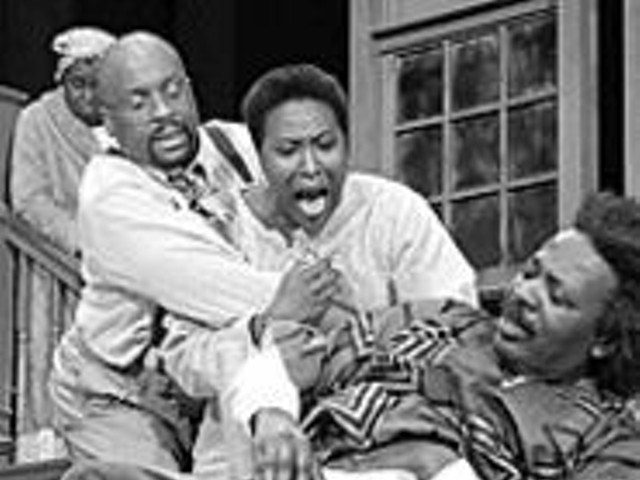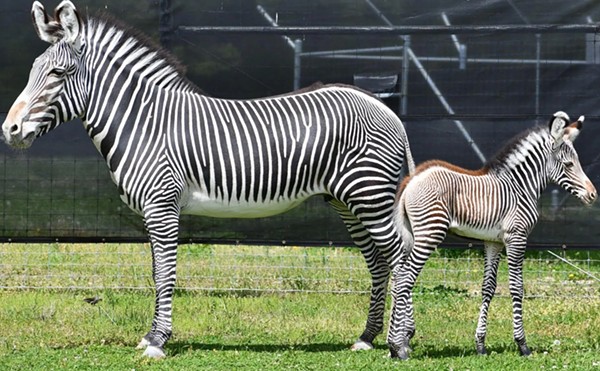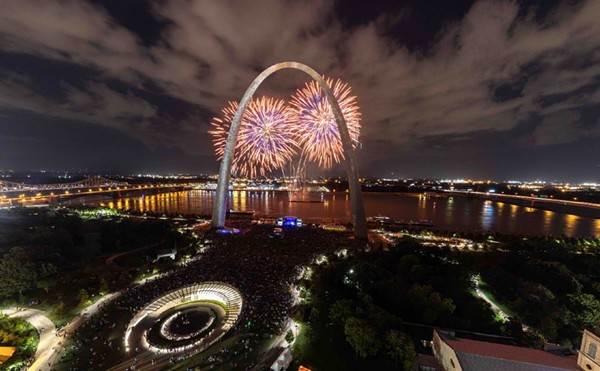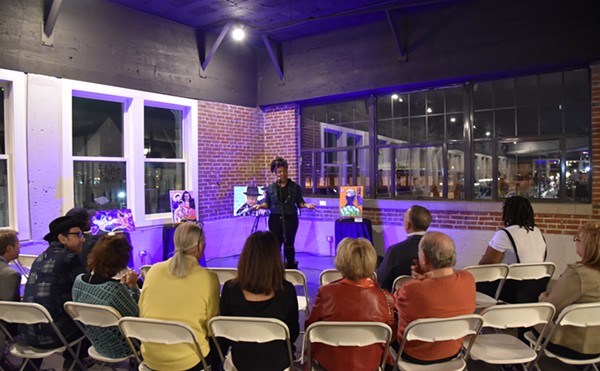Thus it was with a great deal of anticipation that Leax's followers greeted his first major St. Louis exhibition in more than ten years, "Laboratories or Last Suppers," at the Philip Slein Gallery. No one was disappointed. To the contrary, this stunning collection of sculpture and works on paper is practically overwhelming -- if you're a careful observer, you'll probably need to visit the show more than once to fully grasp the range of visual and conceptual questions the artist's work poses.
With "Laboratories or Last Suppers," Leax (pronounced "lex" as in "lexicon") explores some of his signature themes, such as empirical science, ontological investigations, documentation and archives. We've seen him wander about in these territories on numerous occasions, notably in his 1993 "Ontological Library" exhibit at the Forum for Contemporary Art in St. Louis, and his "Strange Attractors" of 1997, which showed in a Michigan gallery. The current exhibition witnesses a new, cleaner pitch to Leax's interrogations. The works seem more focused, pared down in terms of materials but metastasized in their effect.
The ten sculptures in this show are constructions of various scientific containers and tools. Some are moderately sized groups of beakers and tubes; others are enormous structures with highly complex circuits of plastic tubing, ingenious scaffoldings of glass and metal rods, and brilliantly colored liquids and powders. All the sculptures appear to be functional, but their logic seems to belong to a scientific practice far beyond conventional comprehension.
One of the finest sculptures in the show is Last Supper -- to clarify, each of the sculptures is titled either Last Supper or Laboratories, though it's often difficult to determine what differentiates the distinction. This particular Last Supper is a large cubic structure, built out of dozens of glass and steel rods. Picture a Sol LeWitt minimalist cubic grid, but substitute Leax's materials and inject the structure with test tubes, beakers and rubber tubing, and you'll get the picture. Or you'll almost get the picture -- it's hard to imagine the maniacally compulsive personality that would have the patience and the discipline to dream up such a work, let alone to construct it, piece by minuscule piece.
Leax's works are marked by an obsession with scientific and religious transubstantiation, both of which are conjured up in the apparatuses of the laboratory and the church that Leax employs: the powders and the communion wafers scattered about each work, and the liquids in the beakers, which might be wine but might be something more sinister, like an acid or poison potion.
The sculptures possess all the cool authority and inevitability of industrial architecture. They appear perfectly aligned to their purpose, though that purpose remains elusive. One of the Laboratories is held together by brilliant, neon-colored plastic tie-straps, as if each one encoded a message or a function. Another work by the same title has glass beakers attached snugly to industrial steel mesh, as if to capture contaminated liquid runoff.
While the sculptures tend to look logical but dystopian, Leax's works on paper can't help but look melancholy. Most feature communion wafers or chalky mint candies glued onto scientific plotting sheets, one per square, the glue tending to discolor the entire surface. Even more fascinating are the pieces that belong to the Paris Experiment, a series of drawings executed while the sculptor was living there last year. Based on the daily lab notes of Marie Curie and Louis Pasteur, they illustrate chemical phenomena in materials as varied as shoe polish, wine and milk.
"Laboratories or Last Suppers" culminates in two enormous pieces, a Laboratories construction and a Last Supper table, placed together at one end of the gallery. Both works are revelations, yet they somehow come up short of the promises of their titles. Still, both are spectacular to behold and easily pardoned for their shortcomings. The final Laboratories piece is a crucifix constructed of medical equipment and colored plastic ties, erected in the center of a circle of dirt. It's bombastic, certainly, and its message is not altogether clear. Nearby, the Last Supper table holds dozens of clear glass beakers, petri dishes, and containers of wafers, along with rubber molds of fake, tiny dinosaur fetuses.
What Laboratories and Last Suppers ultimately have to do with one another remains a matter of conjecture in Leax's show. There are obvious and general suggestions of transubstantiation, chemistry and the metaphysical, science and spirituality, but no unequivocal statements. I, for one, appreciated the open-endedness of the exhibition. It allows for so many interpretations, from so many directions. And while in a lesser show this approach might make for a cop-out, it's safe to say Ron Leax knows whereof he speaks, given his experience and his previous works. This is a penetrating, memorable exhibition, not to be missed.
In midtown, another show of sculptural installations is also very deserving of a look. The Sheldon Art Galleries are featuring a group sculpture show, "New Works by Jeri Au, Soo Sunny Park and Cheonae Kim." Each one of these Asian artists teaches in St. Louis; at the Sheldon they allow themselves to reflect on cultural identity and its manifestation in art.
Jeri Au, who teaches at Webster University, has proved to be a surprise at every turn. Known as a ceramics artist, she lets loose here with an installation involving Asian noodles, tea and taro leaves and packages of ramen noodles. Her installation crawls up the walls, along the floors, and creeps up the column in the center of the gallery; visitors will have to look twice to remember the original state of the space.
Soo Sunny Park has previously demonstrated her talent as an installation artist with shows at Webster and at Laumeier Sculpture Park. At the Sheldon she boggles the mind once again, painting foam stylene cutouts after traditional Chinese landscapes and installing them in a variety of positions: on the wall, out from the wall 90 degrees, on the floor and bisecting one another. The effect is perplexing -- the already odd angles of vision that characterize Chinese landscape painting are made into three-dimensional dilemmas for viewers. This installation is a wonderful exercise in spatial interpretation and visual power.
Countering these two sculptural meditations are Cheonae Kim's minimalist wall pieces. Previously featured at Philip Slein's gallery and other venues, these tightly controlled works stand as the perfect foil for the frolicsome installations by Park and Au. Kim's beautiful geometric studies also fill out the picture of Asian aesthetic concerns, as they address the tendency toward simplicity and control evident in so much Asian art. The new works by these three artists combine to tell a fascinating story of identity, art and the possibilities of their expression in the St. Louis gallery arena.





